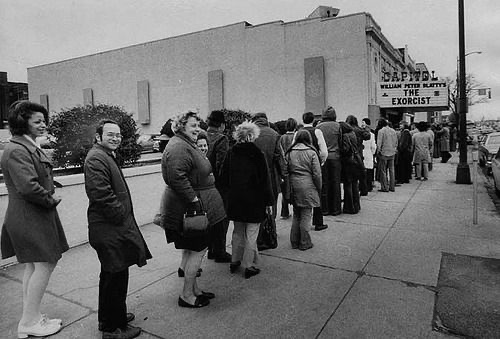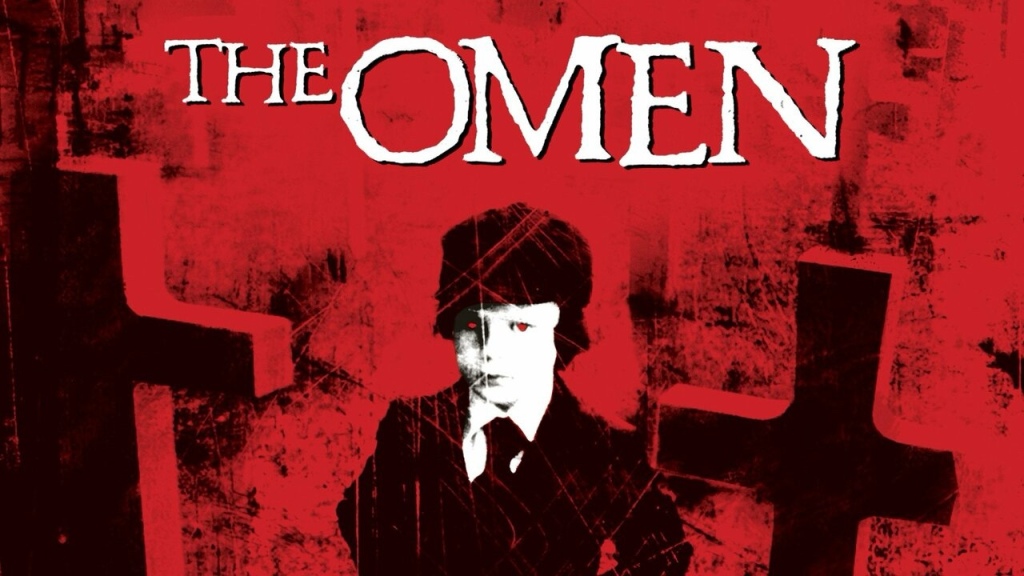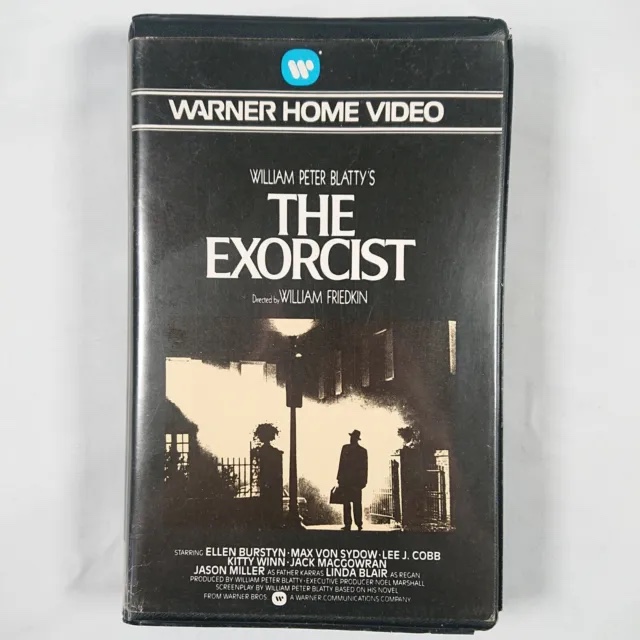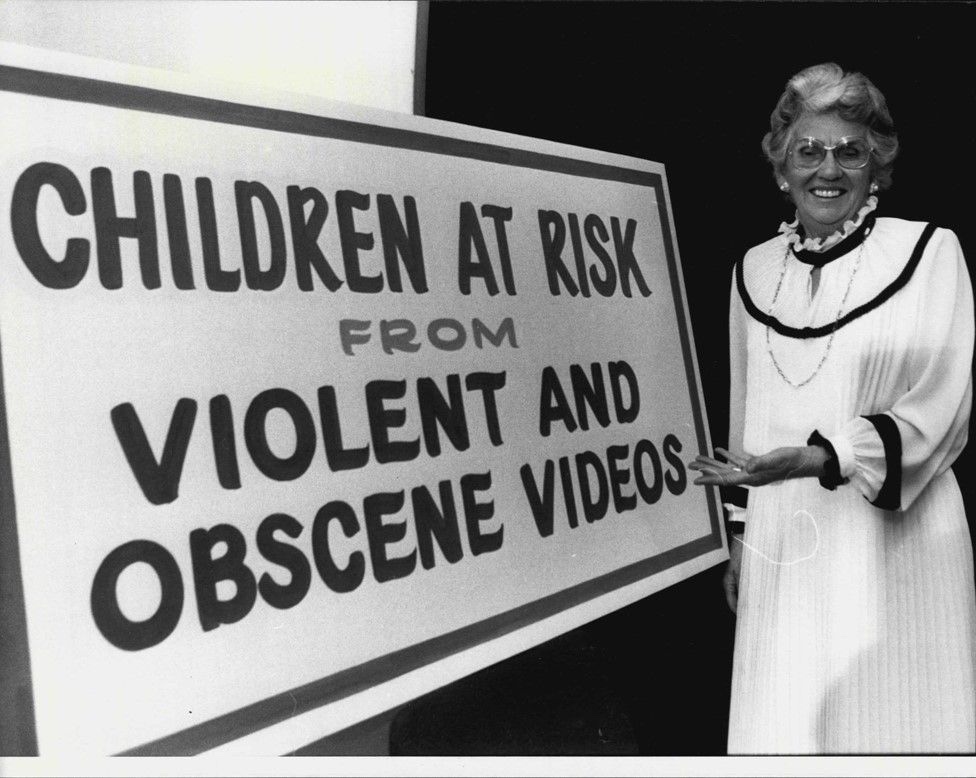Hello my friends. Last week we looked at the new emerging video technology from the 1950’s for professional use as it gradually over the decades started to be ready for home consumers in the late 1970’s.
With the changing technology came a shift in the horror genre. Not only in the graphic nature of the content but in how it would be regulated and how we would get to see it.
These are the times of censorship, banning and video technology spear heading a shady underground world of illegal tapes of forbidden cinema. The early 1980’s was quite something.
Let’s explore and welcome back ☺️
In today’s blog we are going to focus in on some of the most controversial horror films ever made from the mid 1970’s into the early 1980’s.
The technology that made it possible to view these films at home l’ve spoken about before in blog entries like, “The Sloane Ranger” ,from April and also “Don’t be come-cal, it’s the new age of video” , from August of this year.
These talked about those pioneering home video machines from the late 1970’s and into the early 1980s and the inevitable format war between VHS and Betamax at that time.
Film suppression due to its content was nothing new at this point and the horror genre was in the sharpest of focuses from moral crusaders, politicians and religious groups of all types.
I spoke about how things had started with the MPA, (motion picture association), in America with its voluntary age rating system in the late 1960’s but what was happening here in the U.K?
The BBFC, (British board of film classification), was surprisingly much more liberal with their views on censorship and what would be acceptable to the U.K. cinema going public.
There are often misconceptions about certain films, their classifications, legality and whether they were outright banned. Common believed myths that gave certain titles that forbidden status, but was it true?
If l asked a fairly engaged horror fan for them to give me a film that was outright banned in the U.K. they would most likely answer with a few titles but one would be at the top of the list. 1973’s “The Exorcist”.

Adapted from William Peter Blatty’s best selling book of the same name and directed by William Friedkin, “The Exorcist” was a film that changed the landscape for the mainstream horror genre forever.

The movie had a blend of religious supernatural horror that challenged the question of faith, the concept of good vs evil and depicted the vicious demonic possession of a young girl.
It had an exquisite mix of extremely good casting, acting, practical effects, sound, story and cinematography which gave the film its legitimacy and made it all the more horrific.
But key to all this was the fact it got supported and funded within the studio system unlike “Night of the living dead” that had to circumvent that system some 5 years before.
It released late December in 1973 after a hugely successful advertising campaign in America and it was simply met with shock, awe and horror.
Cinema goers queued in their thousands in sub zero weather right across America for tickets to see “The Exorcist” and this went on for weeks and that turned in months.

The hype and reaction to the film was phenomenal and the makers/distributors Warner Bros. didn’t have a smash hit on their hands, they had a global juggernaut of a movie.
There are highly documented cases of movies goers being unable to watch “The Exorcist” all the way through due to its graphic nature.
People fainting, getting sick and being rushed out of cinemas by staff and attending ambulance crews as frightened and terrified audiences members collapsed was an all too real phenomena.
It even got to the point where Catholic priests were urging wood be movie patrons not to see the film entirely and would be stationed outside high profile cinemas in attempts to turn people away.
There is an old saying that any publicity good or bad is still publicity and unwittingly, religious groups in their public and very vocal attacks on “The Exorcist” drove more people to see it out of sheer curiosity.
On the reverse side of that coin, the attendance of people going to church or joining a religious group during this time sky rocketed in America.
There was a general and palpable air of fear as it was claimed that movies like “The Exorcist” and three years later the excellent supernatural religious horror film “The Omen” from 1976 had unleashed forbidden satanic knowledge into the public domain.

To show the potential “modus operandi” of the devil or satanic forces and how it could inflict and influence vulnerable people was seen by religious groups as to expose and glorify evil which they levelled at these films.
Things had quite clearly gotten out of hand. Myths and legends were being weaved into the fabric of the horror film genre and mixed with reality like never before and this was all about to hit the U.K.
“The Exorcist” opened here across the pond in March of 1974, as global simultaneous releasing of movies would not be a thing for a good few decades yet.
The BBFC had given the film its “X” rating which was its highest at the time but they saw no issue with the nature of the content and it was authorised for national release.
Of course the hype and indignation travelled to the U.K. from the states long before the film arrived in that March and religious/pressure groups were primed to oppose it.
Now, the was “The Exorcist” banned from cinema’s in the U.K. in 1974? partially would be the answer.
It depended in which area you lived in and whether the local council in that area had bowed to the said pressure groups and cinemas subsequently refused to screen it.
But this didn’t stop entrepreneurs cashing in and “Exorcist coach tours” became a thing where you could take a ride to a neighbouring area that had cinemas showing the film and see it if it was banned locally to you.
Fast forward to 1981 and “The Exorcist” would see a home video release for the first time and it was one of the first films ever released by Warner Bros. on VHS in the U.K.
Once again the BBFC would take no issue with the film because at the time their classification system didn’t extend to VHS films and it was released with the same cut of the film that passed the original cinema “X” classification.

Was the VHS version of the film banned in the U.K.? not initially but it was eventually. Many of the 1970’s and early 1980’s horror films were now coming to video for the first time and taking advantage of the new technology.
Unlike their original cinema releases that had been controlled by the age rating system, people of any age were able to,(in theory), watch these horror films at home without regulation.
There was an outcry from the pressure groups again in the U.K. in conjunction with the government and the so called “Video nasties” wave hit the news headlines.

The “video nasties” list was a common phrase and not a made up term to sell newspapers. It was used by the U.K.‘s director of public prosecutions as an actual title in grouping these horror films together
The term was also adopted by the NVALA, (National Viewers And Listener’s Association), in conjunction with a focal figure on this crusade in the shape of Mary Whitehouse.

In these early years of horror films coming to video without classification, the director of public prosecutions used the 1959 “Obscene publications act” to construct the “video nasties” list.
Subsequently, these films automatically received a ban pending an appeal which made them, quite frankly even more desirable for people to try and watch.
72 films made that list by June of 1983 and where brought to the public’s attention with over half of those titles being successfully prosecuted under the 1959 law.
Films like the “Cannibal Holocaust” from 1980, “The Texas Chainsaw Massacre” from 1974, “Driller Killer” from 1979 and “Rabid” from 1977 just to name a few, all got taken out of video circulation in the U.K.

With my Father working up in London and us having a video machine since the late 1970’s he would get offered these “video nasties” which would be copies of the original VHS or even copies from the original film print itself.
The strange thing was that neither of my parents were horror film fans, especially my Mother so, l don’t know why my Father bought these films? l guess he just wanted to see what all the fuss was about.
Now, bare in mind that a new and official VHS pre-recorded tape was anywhere from £50 to £100 each depending on the title back in the early 1980’s, (£235-£470 in today’s money), so they weren’t cheap.
The video nasty might cost you the same, maybe even more if it become a banned title. It was a underground business and carried a hefty fine and possible prison sentence if you were caught making and distributing these films, so it was risky.
It wasn’t like my Father went looking for these films, there just seemed to be a person in every pub and club up and down the U.K. that knew someone that could get them.
It became a bit of a Wild West show with headlines popping up in the papers on a regular basis whenever the latest new video nasty title would hit the U.K. and the network of salubrious vendors selling them.
The powers at be along with the pressure groups mentioned before, forced the issue and the print media knew this would sell newspapers as they stoked the fires of popular opinion.
It was claimed that the youth of the U.K. was supposedly being subverted into crazed, blood thirsty, satanic worshipping, killers after being brainwashed by these films and that the government needed to do more.
In 1984, the VRA, (Video Recordings Act), came into effect and finally VHS films were given age ratings by the BBFC and subject to the same close scrutiny given to cinema releases.
Most horror films after that year and running up to it, made sure their content met the strict guidelines set down by the new classifications.
With the new 18 rating being the highest, horror films could still be extremely graphic in their content but with only modest cuts to the footage.
This also meant that a horror film shown in the cinema could then be transferred later on down the line without any additional cost in re-editing to video making it cost effective.
The public chaos of the video nasty slowly ebbed away from there on in with only a core of the older late 1970’s and early 1980’s horror films still not being able to meet the new 1984 rating standard and would remain banned, some to this day.
Let’s just finish off today’s blog and “The Exorcist” story. The banning of the film in the U.K. wouldn’t take place until 1988, some 14 years after its initial release in the cinemas and then its re-release on video 8 years after that.
It was felt by the BBFC that because the child star of “The Exorcist” Linda Blair was just barely 12 years old at the time the film was made, that it might have significantly more appeal to a younger video watching audience.
Even with the 18 rating they obviously couldn’t regulate private video watching habits and they also felt at this time that the hysteria which had attached itself to the film was still relevant even in the late 1980’s.
“The Exorcist” on VHS, laserdisc and any other home media was pulled from shelves that year with only a very limited cinema run in 1991 under the 18 rating.
In 1998 in was “The Exorcist” had it’s 25th anniversary and the film was sent back to the BBFC to be re-classified for home media release and the board felt that public attitudes had relaxed and the hysteria had lessened enough by this time.
“The Exorcist” was once again back on the shelves after a 25 year rollercoaster of controversy.
In the next and final blog entry for this spooky month of October, we look at those “video nasties” l first saw, what horror films shaped one of the most important decades for the genre of the 1980’s and what new technology was coming for the home movie audience.
As always, thank you so much for reading today’s entry, your likes, comments, shares and general interest in the blog.
Let’s explore together again next week ☺️
Leave a comment